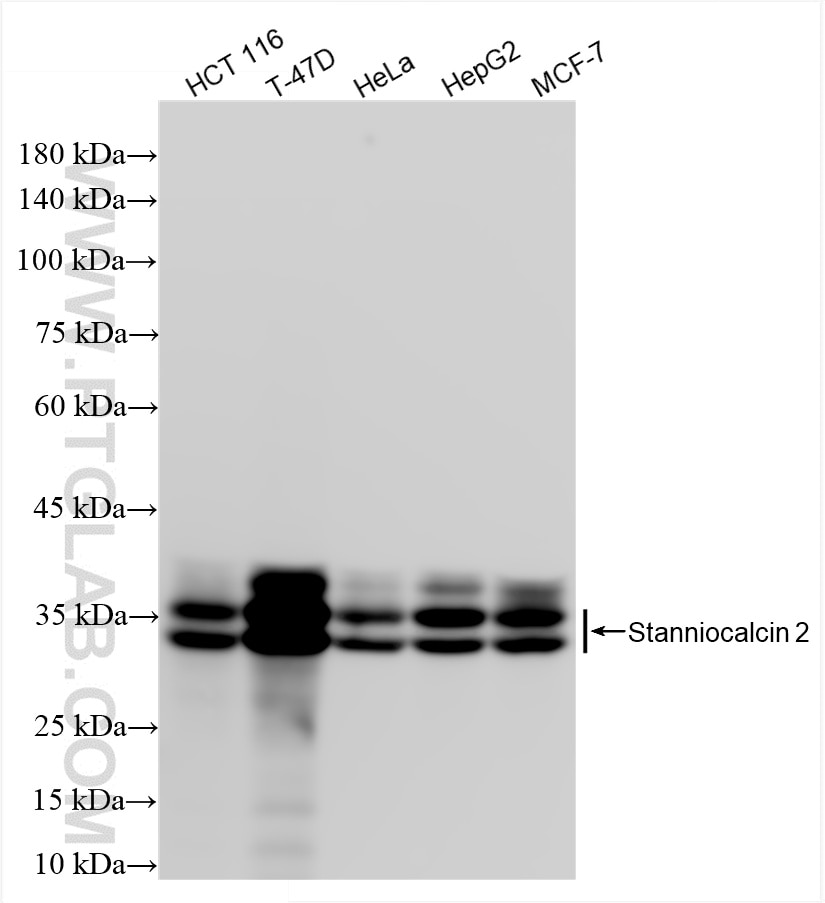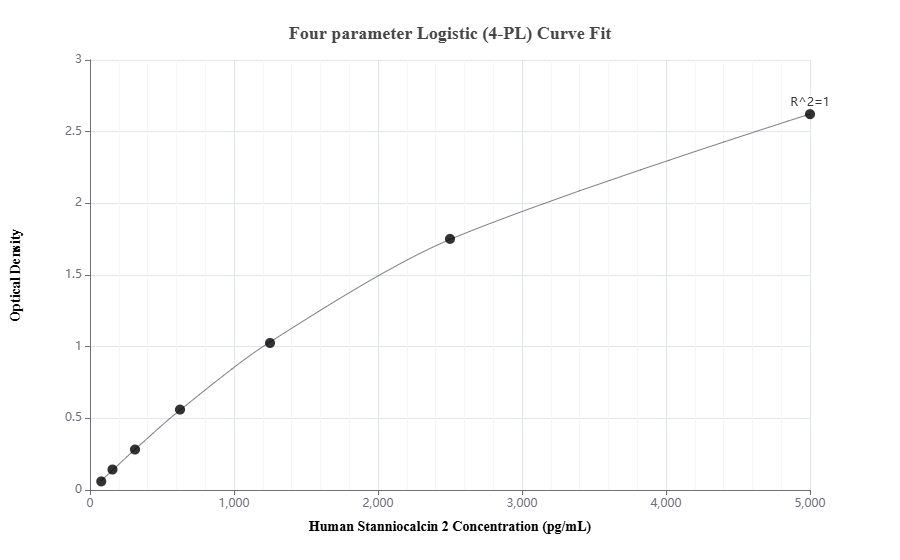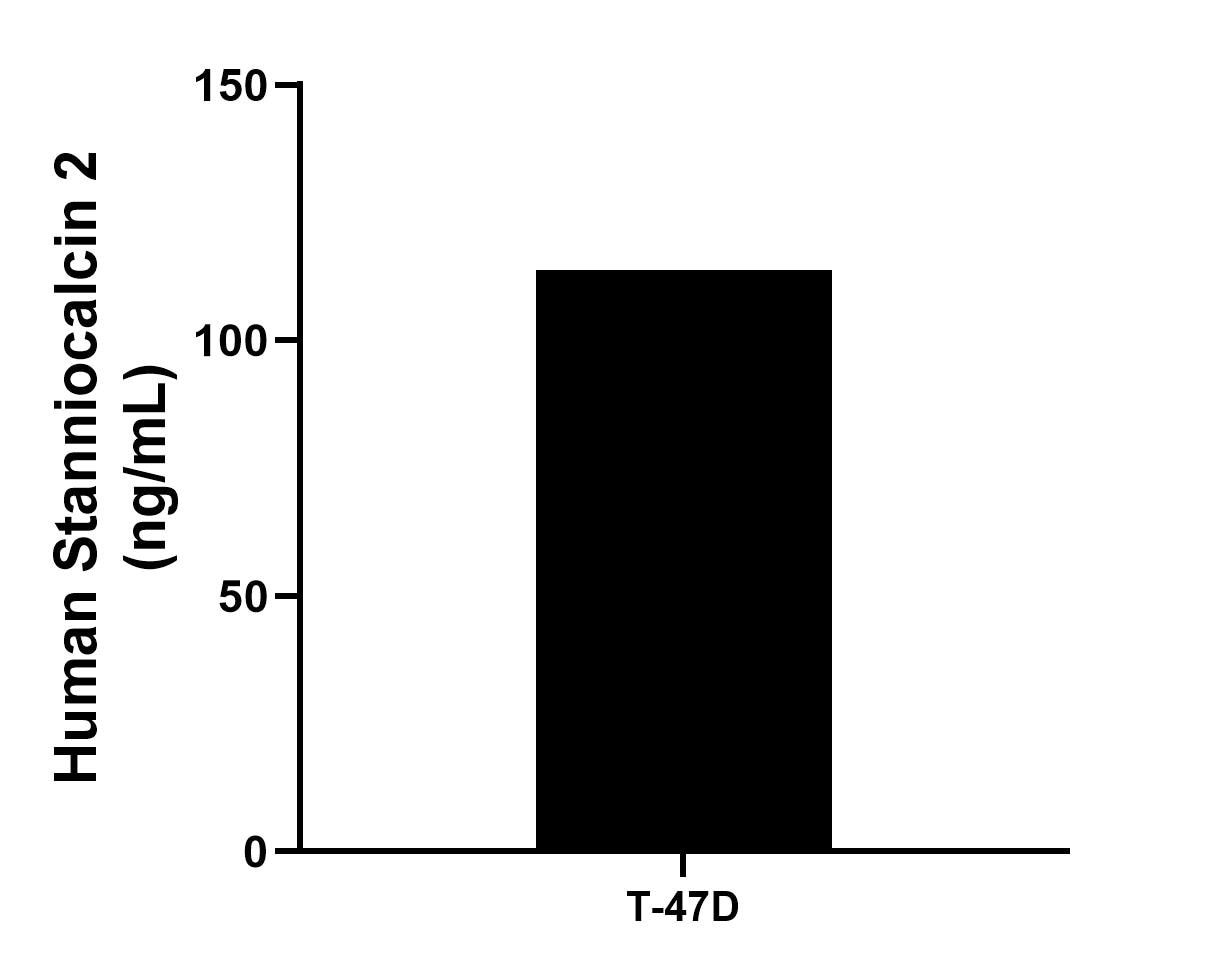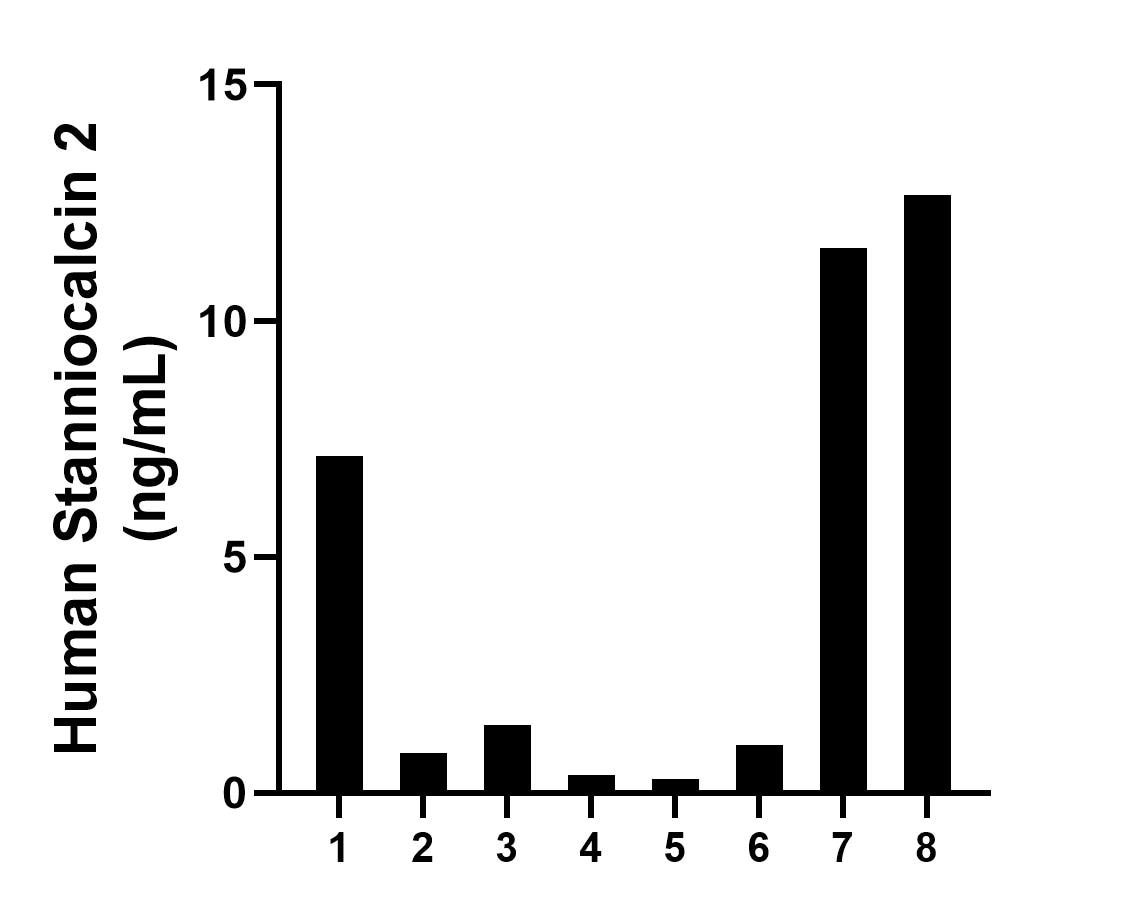Product Information
85910-1-PBS targets Stanniocalcin 2 as part of a matched antibody pair:
MP02212-1: 85910-1-PBS capture and 85910-3-PBS detection (validated in Sandwich ELISA)
Unconjugated rabbit recombinant monoclonal antibody in PBS only (BSA and azide free) storage buffer at a concentration of 1 mg/mL, ready for conjugation. Created using Proteintech’s proprietary in-house recombinant technology. Recombinant production enables unrivalled batch-to-batch consistency, easy scale-up, and future security of supply.
This conjugation ready format makes antibodies ideal for use in many applications including: ELISAs, multiplex assays requiring matched pairs, mass cytometry, and multiplex imaging applications.Antibody use should be optimized by the end user for each application and assay.
| Tested Reactivity | human |
| Host / Isotype | Rabbit / IgG |
| Class | Recombinant |
| Type | Antibody |
| Immunogen |
CatNo: Eg3119 Product name: Recombinant Human Stanniocalcin 2 protein (rFc Tag) Source: mammalian cells-derived, V37 Tag: C-rFc Domain: 25-302 aa of NM_003714.3 Sequence: TDATNPPEGPQDRSSQQKGRLSLQNTAEIQHCLVNAGDVGCGVFECFENNSCEIRGLHGICMTFLHNAGKFDAQGKSFIKDALKCKAHALRHRFGCISRKCPAIREMVSQLQRECYLKHDLCAAAQENTRVIVEMIHFKDLLLHEPYVDLVNLLLTCGEEVKEAITHSVQVQCEQNWGSLCSILSFCTSAIQKPPTAPPERQPQVDRTKLSRAHHGEAGHHLPEPSSRETGRGAKGERGSKSHPNAHARGRVGGLGAQGPSGSSEWEDEQSEYSDIRR Predict reactive species |
| Full Name | stanniocalcin 2 |
| Calculated Molecular Weight | 33 kDa |
| Observed Molecular Weight | 33-35 kDa |
| GenBank Accession Number | NM_003714.3 |
| Gene Symbol | Stanniocalcin 2 |
| Gene ID (NCBI) | 8614 |
| Conjugate | Unconjugated |
| Form | Liquid |
| Purification Method | Protein A purification |
| UNIPROT ID | O76061 |
| Storage Buffer | PBS only, pH 7.3. |
| Storage Conditions | Store at -80°C. |
Background Information
Stanniocalcin (STC) is a family of secreted glycoprotein hormones that originally discovered in the corpuscles of Stannius, an endocrine gland of fish. STC1 and STC2, two homologues of STC family, are reported to involve in calcium and phosphate homeostasis. It is expressed in a wide variety of tissues such as kidney, spleen, heart, and pancreas. The protein may play a role in the regulation of renal and intestinal calcium and phosphate transport, cell metabolism, or cellular calcium/phosphate homeostasis. STC2 overexpression could promote tumor cell proliferation, invasion and metastasis in prostate cancer, ovarian cancer or neuroblastoma. STC2 is also vital for cytoprotective properties when exposed to ER stress and hypoxia.










